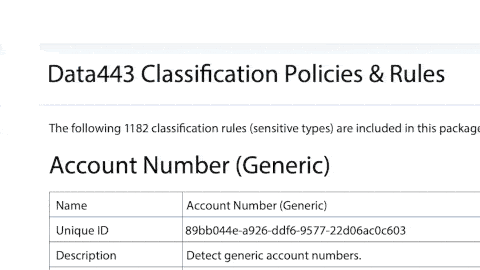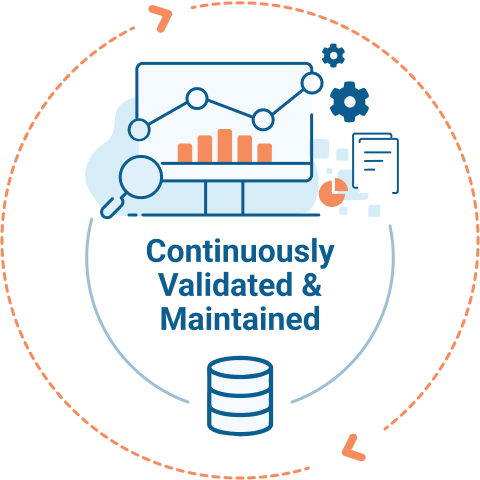Advanced Data Classification


Data classification is the process of organizing information assets using an agreed-upon categorization, taxonomy or ontology. The result is typically a large repository of metadata useful for making further decisions. This can include the application of a tag or label to a data object to facilitate its use and governance, either through the application of controls during its life cycle, or the activation of metadata using data fabric.
By Deepti Gopal, Sema Yuce, Michael Kranawetter – Source
Why Is Data Classification Important?

Enhances Data Security

Facilitates Compliance

Improves Data Management
Data Identification Managers Architecture

Flexible and Comprehensive Built-In Policies for Data Classification
Extensive Policy Repository
Our software includes a vast repository of over 1300 global privacy policies, covering 40+ native languages. This extensive range allows for immediate, accurate classification across diverse data types and regions, eliminating the need for time-consuming language translation.Customizable Classification Rules
Tailor your data classification to fit your unique needs. Our system allows you to mix, match, and modify existing policies to create new classification rules. This customization ensures a precise fit for your company’s specific data environmentSetting Confidence Levels and Unique Count Minimums
Gain control over classification accuracy. Adjust the confidence level to balance between precision and coverage, and set the unique count minimum to minimize false positives. This flexibility helps fine-tune the system to your organization’s data landscape.
Tailored Solutions for Your Data Classification Needs!
Speak with our experts to discover the perfect data archiving plan for your business.
Comprehensive Reporting with
Data Identification Manager

Diverse Data Reporting

Lightning-Fast Query Times

Integration with PowerBI

Exportable Results
Harnessing Machine Learning "Magic" for Data Classification
Initial Training with Machine Learning
Our system begins with a robust machine learning model, pre-trained to understand a broad spectrum of data types. This foundational training ensures highly accurate data identification and classification from the outset.End-User Validation of Classifications
We emphasize flexibility by offering optional features for end-users to validate machine learning-generated classifications. This alignment with your business’s unique requirements guarantees that our automated processes are tailor-made for your needs.Continuous Machine Learning Validation
The innovation continues unabated! Our application perpetually validates and refines its classifications via ongoing machine learning. This dynamic approach maintains data classification accuracy, ensuring it stays current and adapts to evolving data patterns and organizational shifts.Language Smart RuleSets

Steward, Notifications
Machine Learning, Validation of Detected, Classification
Advanced Data Classification and Compliance for a Leading Global Bank
Situation
A leading global bank, operating in regions with stringent auditing and data compliance standards, faced the intricate task of managing and classifying a wide range of data effectively.Challenge
The bank was confronted with the challenge of scanning, classifying, and managing both structured and unstructured data across various platforms. This task was intensified by the need to adhere to the strict auditing and data protection regulations specific to some of the regions it operated in.Solution
Data443 Data Identification Manager provided an ideal solution. It offered an extensive array of over 1300+ built-in rules in 40+ languages, which the bank initially used for data classifications. The bank also capitalized on our solution's flexibility to create custom text and regex rules, further refining the classification process to meet their unique requirements. This allowed the bank to effectively classify data across an array of repositories, such as SQL Server, SAP, Oracle, MongoDB, MySQL, and various file systems and network shares. A key advantage of our solution was its integration capabilities, enabling the bank to link their PowerBI instance for enhanced data analytics and reporting. Additionally, the solution facilitated seamless mapping with Microsoft AIP and CyberArc, offering robust security and efficient access management across the bank’s data repositories.Outcome
The implementation of Data Identification Manager notably improved the bank's data governance, security, and compliance frameworks. The solution's adaptability, coupled with its robust built-in rules, allowed for a custom and efficient data classification system. This comprehensive approach not only ensured compliance with regional data protection and auditing standards but also streamlined their data management processes, significantly boosting operational efficiency. By utilizing the Data Identification Manager, our customer successfully addressed complex data classification challenges and regulatory changes in the banking sector.